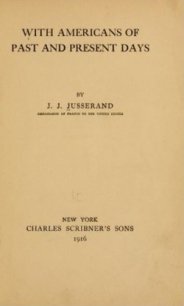Deception Point - Brown Dan (книга бесплатный формат .TXT) 📗
Rachel watched Tolland navigating the menus. "So you're accessing the Web now?"
"No. Internet access is tricky at sea. We store all this data onboard on an enormous array of optical drives in the other room. Every time we're in port, we tie into Project Diversitas and update our databank with the newest finds. This way, we can access data at sea without a Web connection, and the data is never more than a month or two out of date." Tolland chuckled as he began typing search keywords into the computer. "You've probably heard of the controversial music file-sharing program called Napster?"
Rachel nodded.
"Diversitas is considered the marine biologist's version of Napster. We call it LOBSTER — Lonely Oceanic Biologists Sharing Totally Eccentric Research."
Rachel laughed. Even in this tense situation, Michael Tolland exuded a wry humor that eased her fears. She was beginning to realize she'd had entirely too little laughter in her life lately.
"Our database is enormous," Tolland said, completing the entry of his descriptive keywords. "Over ten tera-bytes of descriptions and photos. There's information in here nobody has ever seen-and nobody ever will. Ocean species are simply too numerous." He clicked the "search" button. "Okay, let's see if anyone has ever seen an oceanic fossil similar to our little space bug."
After a few seconds, the screen refreshed, revealing four listings of fossilized animals. Tolland clicked on each listing one by one and examined the photos. None looked remotely like the fossils in the Milne meteorite.
Tolland frowned. "Let's try something else." He removed the word "fossil" from his search string and hit "search." "We'll search all living species. Maybe we can find a living descendant that has some of the physiological characteristics of the Milne fossil."
The screen refreshed.
Again Tolland frowned. The computer had returned hundreds of entries. He sat a moment, stroking his now stubble-darkened chin. "Okay, this is too much. Let's refine the search."
Rachel watched as he accessed a drop-down menu marked "habitat." The list of options looked endless: tide pool, marsh, lagoon, reef, mid-oceanic ridge, sulfur vents. Tolland scrolled down the list and chose an option that read: Destructive Margins/Oceanic Trenches.
Smart, Rachel realized. Tolland was limiting his search only to species that lived near the environment where these chondrulelike features were hypothesized to form.
The page refreshed. This time Tolland smiled. "Great. Only three entries."
Rachel squinted at the first name on the list. Limulus poly… something.
Tolland clicked the entry. A photo appeared; the creature looked like an oversized horseshoe crab without a tail.
"Nope," Tolland said, returning to the previous page.
Rachel eyed the second item on the list. Shrimpus Uglius From Hellus. She was confused. "Is that name for real?"
Tolland chuckled. "No. It's a new species not yet classified. The guy who discovered it has a sense of humor. He's suggesting Shrimpus Uglius as the official taxonomical classification." Tolland clicked open the photo, revealing an exceptionally ugly shrimplike creature with whiskers and fluorescent pink antennae.
"Aptly named," Tolland said. "But not our space bug." He returned to the index. "The final offering is… " He clicked on the third entry, and the page came up.
"Bathynomous giganteus… " Tolland read aloud as the text appeared. The photograph loaded. A full-color close-up.
Rachel jumped. "My God!" The creature staring back at her gave her chills.
Tolland drew a low breath. "Oh boy. This guy looks kind of familiar."
Rachel nodded, speechless. Bathynomous giganteus. The creature resembled a giant swimming louse. It looked very similar to the fossil species in the NASA rock.
"There are some subtle differences," Tolland said, scrolling down to some anatomical diagrams and sketches. "But it's damn close. Especially considering it has had 190 million years to evolve."
Close is right, Rachel thought. Too close.
Tolland read the description on the screen: "'Thought to be one of the oldest species in the ocean, the rare and recently classified species Bathynomous giganteus is a deepwater scavenging isopod resembling a large pill bug. Up to two feet in length, this species exhibits a chitinous exoskeleton segmented into head, thorax, abdomen. It possesses paired appendages, antennae, and compound eyes like those of land-dwelling insects. This bottom-dwelling forager has no known predators and lives in barren pelagic environments previously thought to be uninhabitable." Tolland glanced up. "Which could explain the lack of other fossils in the sample!"
Rachel stared at the creature on-screen, excited and yet uncertain she completely understood what all of this meant.
"Imagine," Tolland said excitedly, "that 190 million years ago, a brood of these Bathynomous creatures got buried in a deep ocean mud slide. As the mud turns into rock, the bugs get fossilized in stone. Simultaneously, the ocean floor, which is continuously moving like a slow conveyer belt toward the oceanic trenches, carries the fossils into a high-pressure zone where the rock forms chondrules!" Tolland was talking faster now. "And if part of the fossilized, chondrulized crust broke off and ended up on the trench's accretionary wedge, which is not at all uncommon, it would be in a perfect position to be discovered!"
"But if NASA…," Rachel stammered. "I mean, if this is all a lie, NASA must have known that sooner or later someone would find out this fossil resembles a sea creature, right? I mean we just found out!"
Tolland began printing the Bathynomous photos on a laser printer. "I don't know. Even if someone stepped forward and pointed out the similarities between the fossils and a living sea louse, their physiologies are not identical. It almost proves NASA's case more strongly."
Rachel suddenly understood. "Panspermia." Life on earth was seeded from space.
"Exactly. Similarities between space organisms and earth organisms make excellent scientific sense. This sea louse actually strengthens NASA's case."
"Except if the meteorite's authenticity is in question."
Tolland nodded. "Once the meteorite comes into question, then everything collapses. Our sea louse turns from NASA friend to NASA linchpin."
Rachel stood in silence as the Bathynomous pages rolled out of the printer. She tried to tell herself this was all an honest NASA mistake, but she knew it was not. People who made honest mistakes didn't try to kill people.
The nasal voice of Corky echoed suddenly across the lab. "Impossible!"
Both Tolland and Rachel turned.
"Measure the damn ratio again! It makes no sense!"
Xavia came hurrying in with a computer printout clutched in her hand. Her face was ashen. "Mike, I don't know how to say this… " Her voice cracked. "The titanium/zirconium ratios we're seeing in this sample?" She cleared her throat. "It's pretty obvious that NASA made a huge mistake. Their meteorite is an ocean rock."
Tolland and Rachel looked at each other but neither spoke a word. They knew. Just like that, all the suspicions and doubts had swelled up like the crest of a wave, reaching the breaking point.
Tolland nodded, a sadness in his eyes. "Yeah. Thanks, Xavia."
"But I don't understand," Xavia said. "The fusion crust… the location in the ice-"
"We'll explain on the way to shore," Tolland said. "We're leaving."
Quickly, Rachel collected all the papers and evidence they now had. The evidence was shockingly conclusive: the GPR printout showing the insertion shaft in the Milne Ice Shelf; photos of a living sea louse resembling NASA's fossil; Dr. Pollock's article on ocean chondrules; and microprobe data showing ultradepleted zirconium in the meteorite.




